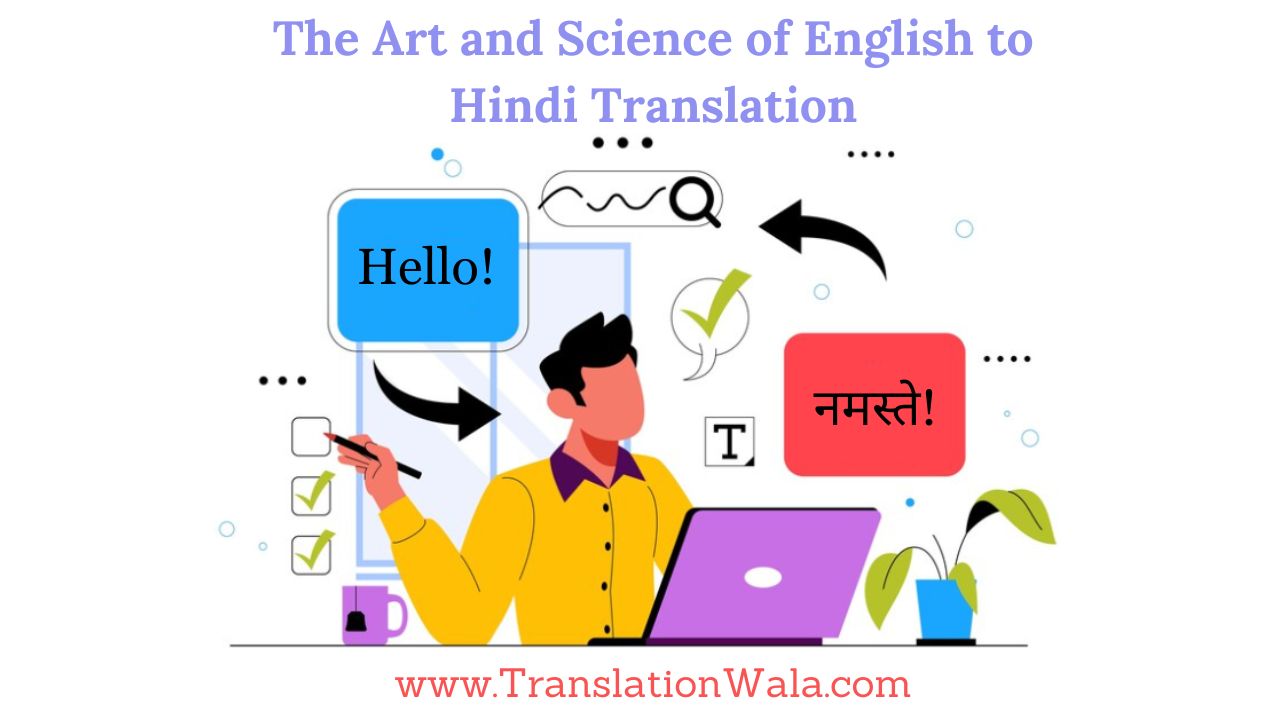It takes a special mix of art and science to bridge the gap between English and Hindi, which are two separate but connected languages. The science behind correct translation gives us the tools and models we need, but the art is in catching the subtleties, cultural references, and emotional core of the text. This piece goes into the interesting world of English to Hindi Translation. It looks at how the two languages work together and how important it is for conversation and knowing other cultures.
The Science of Accuracy: Tools and Techniques
For a translation to be good, it needs to be accurate. To make sure they stay true to the original text, translators use a wide range of science tools and methods. Machine translation (MT) tools like Microsoft Translator and Google Translate can be used as a starting point to make quick, simple changes. But because they have flaws, especially in complicated situations, they need human help.
This is where trained interpreters come in, armed with definitions, glossaries, and libraries of terms. They carefully look over the source text to understand how it is put together, what words are used, and how the sentences are put together. They are fluent in both languages and can handle the complexities of each, including idioms and culture references.
Translators pay close attention to more than just the words. They also think about the text’s intended audience, purpose, and language. This research makes sure that the translated text speaks to the right people in the same way that the source did.
Also Read: English to Punjabi translation: Your key to success in a globalized world
The Art of Expression: Beyond the Literal
Even though correctness is very important, translation is more than just changing words word for word. The art is getting across the tone, feelings, and cultural references of the original without changing anything. This is where your imagination and language skills come in handy.
A good translator knows that different languages have different cultural meanings. They try to come up with Hindi words that have the same cultural and emotional meanings as the English words. This could mean coming up with different words or phrases, changing ideas, or even discussing cultural references in the translated text.
The interpreter also thinks about the cultural background and amount of understanding of the audience. To be clear and avoid cultural mistakes, they might need to break down complicated ideas, change the humor, or rewrite words.
The Symbiotic Relationship: Art and Science Working Together
When you translate from English to Hindi, the real magic is in how well science and art work together. Accuracy is based on science tools, but artistic opinion makes sure that the translated text gets the heart and soul of the original.
If you were to translate a song, using only technical translation would lead to a precise, lifeless version. But a good translator can use their artistic sense to make a Hindi version that keeps the poem’s beauty, rhythm, and emotional effect.
This two-way relationship is very important for many types of translation, from literary works and cultural stories to legal records and scientific studies. Each one needs a deep knowledge of both languages and the ability to change the text to fit the audience and purpose it’s meant for.
Also Read: English to Tamil Translation: The Key to Unlocking Tamil Education
The Significance of Effective Translation: Beyond Words
For English to Hindi translation to work, it takes more than just changing words. It helps people from different backgrounds understand each other’s cultures, communicate, and get along with each other.
Think about how translated literature has changed lives by introducing Hindi readers to new ideas and points of view from around the world. Translated movies bring people from different countries together and help them understand and appreciate other cultures. Making sure that legal papers are translated correctly is important for fair representation and getting to court.
Also, in today’s international world, correct translation is very important for business contact, working together in academia, and sharing science information, which leads to progress and sharing of knowledge.
Conclusion: A Continuous Journey of Learning and Evolution
English to Hindi Translation is still an art and a science that is always changing. Translators have to keep changing their skills and methods because languages change and cultures mix. It’s important for them to use new tools like neural machine translation while also improving their language and cultural skills.
Translators can bridge the gap between English and Hindi by always learning and growing. They can do this not only correctly, but also beautifully and effectively, helping people and groups around the world understand each other and making their lives better.
